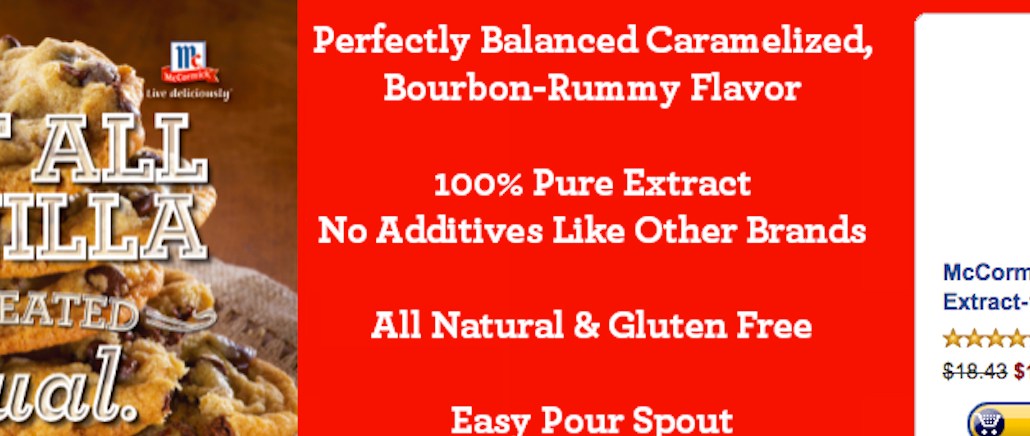
In Amazon’s vast sea of retailers, the product page doubles as both the point of purchase and a brand’s online storefront on the marketplace. It’s also an opportunity to shine.
When a customer is researching a purchase on Amazon, the website provides run-of-the-mill product detail and reviews. The “From the Manufacturer” section of the product page, however, is where the brand gets to speak to the consumer — and the more detailed and creative a brand gets, the better.
Putting extra information directly on the screen that customers are about to buy from helps brands set themselves apart on Amazon, according to L2’s Samuel Lee, who led the research for the 2015 Digital IQ Index study for food brands.
L2 found that 65 percent of brands on Amazon, including Campbell’s, Nestlé Coffee-mate and McCormick, create rich product descriptions, using enhanced images, videos, colorful wording and more.
“It sounds simple on the surface, but you’d be surprised by how many brands don’t think to do that,” said Lee. While Lee said Amazon doesn’t break out data on user engagement per product page, the number of user reviews on a product, indicating interest, directly correlates with how much a brand has invested in its product descriptions.
Coffee-mate, owned by Nestlé, shares recipes on its product pages; for Coffee-mate’s French Vanilla creamer, the brand lists how to make drinks like an iced vanilla chai and a vanilla frappé. According to L2’s study that charted the digital IQ of leading food brands, promoting recipes was found to be more lucrative than promoting products due to their influence on the path to purchase.
Spice brand McCormick’s product page for vanilla extract shares one recipe, the company’s brand story (which dates back 125 years) and shares photos of each product’s SKU and nutrition labels, which L2 said can make the consumer more confident when buying online.
Ad position: web_incontent_pos1

“Anything that can capture the consumer’s attention is what counts,” said Lee. “It’s the little things that set a brand apart from the rest of the pack somewhere like Amazon. More and better pictures are a good place to start — whatever makes the product stick out.”
While L2’s study looked at food brands, Lee said the benefits of rich product descriptions — engaging the consumer and driving purchases — could be applied across most consumer-good categories.
In July, Amazon rolled out Amazon Launchpad, a microsite within the marketplace designated for consumer startups. The product pages on Launchpad are designed t0 promote the young companies that created them. Startups, like Casper Mattress and wearable company Pavlok, shared their background story on the page, showed video about their products, and founders answered questions about their company.

Ad position: web_incontent_pos2
Putting such detailed information on the product page makes sense for how customers shop on Amazon. Sucharita Mulpuru-Kodali told Digiday that it isn’t a “browse destination or that much of a discovery engine.” Brands have one chance to influence the customer on Amazon — when they’re at the point of purchase, researching items, not overall companies.
According to Lee, all other consumer categories should adopt the level of detail that Amazon has put into sharing the startup’s stories, because on the website, shoppers aren’t searching brand names, they’re searching for product keywords.
“Best selling products show up at the top of Amazon searches, and besides having a superior product, the best thing a brand can do is put effort into the page they’re putting in front of consumers.”
More in Marketing

In the marketing world, anime is following in the footsteps of gaming
As marketers look to take advantage of anime’s entry into the zeitgeist, they might be wise to observe the parallels between the evolution of anime as a marketing channel and the ways brands have learned to better leverage gaming in recent years.

With the introduction of video ads and e-commerce, Roblox looks to attain platform status
Roblox is expanding into more areas than just ads in 2024. Much like platforms such as Amazon and Facebook have transcended their origins to evolve from their origins as online marketplaces and social media channels, Roblox is in the midst of a transformation into a platform for all elements of users’ virtual lives.

PepsiCo wants to remain a ‘driver of culture’ as it turns to influencers and activations amid rebrand
The soda-maker says it can translate cultural relevance into sales volume.
Ad position: web_bfu